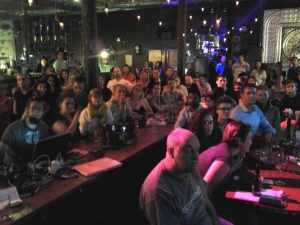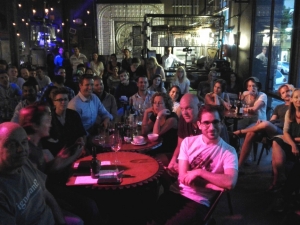Good News for Bad News Days
While living in Cape Town, South Africa for the past two years, I came to crave my 7km barefoot runs on the beach, surfing in the cool, early morning waves of False Bay, breakfast of fresh, locally grown organic veggies and hand-picked eggs, and a half hour reading the good news of the day.
In a world filled with news of local political corruption and national debt, gang fights and robberies, ISIS and the North Korean threat, and increasing violence in Palestine and Israel, I long for something to remind me that our species is not as sinister as we seemingly demonstrate.
For me, scientific research and discovery is much needed good news, a human craving for knowledge and expression of creativity that knows no bounds. Science, Scientific American, New Scientist, National Geographic, –they offer stories of teams that are working to solve some of our greatest challenges. Yes, many of the stories begin with a description of a dire situation–global warming, browning waters, fisheries on the brink of collapse, energy production that poisons our atmosphere, and the spread of deadly disease. But each issue is met with deeper insight to the problem and often a means to counter pending catastrophe. Even more stories are about pure discovery, made by those who desire to know how the world works in intimate detail.
We peer inside the human brain to address our behaviour. We follow the migration of wild game to learn how to help keep ecosystems in balance. We study ancient relics to learn what we once knew, but have long since forgotten. We look to the dark corners of our solar system in search of the origin of life and to the very beginning of time to determine if this is the only universe, or one of many which co-exist.
“The hole wide multiverse”
“A 10-minute rest can boost memory like sleep”
“Farting plants kick up a stick if irked”
“Narwhal nurseries spotted”
“Math whizzes of ancient Babylon figured out forerunner of calculus”
“Tegu lizards get body heat boost during mating season”
“Computer that mimics human brain beats professional at game of Go”
In New Scientist, issue Jan 9-15, 2016, a story of Alexander Graham Bell in 1880, when he built a photophone, a device that uses light to transmit sound, has him saying, “I have heard articular speech by sunlight! I have heard a ray of sun laugh and cough and sing! I have been able to hear a shadow and I have even perceived by ear the passage of a cloud across the sun’s disk!” The inventor of the telephone, whose namesake yet lives on, wrote in poetic form the exuberance of his discovery and invention.
When we allow ourselves to see the world through the eyes of a child, we once again take on that child-like form. We celebrate what we learn not because it elevates us as individuals, to gain fame, wealth, or power (for those are the burdens of the adult world) but because it opens our minds to what we do not know, and how much more of the mystery remains for us to unravel.





















